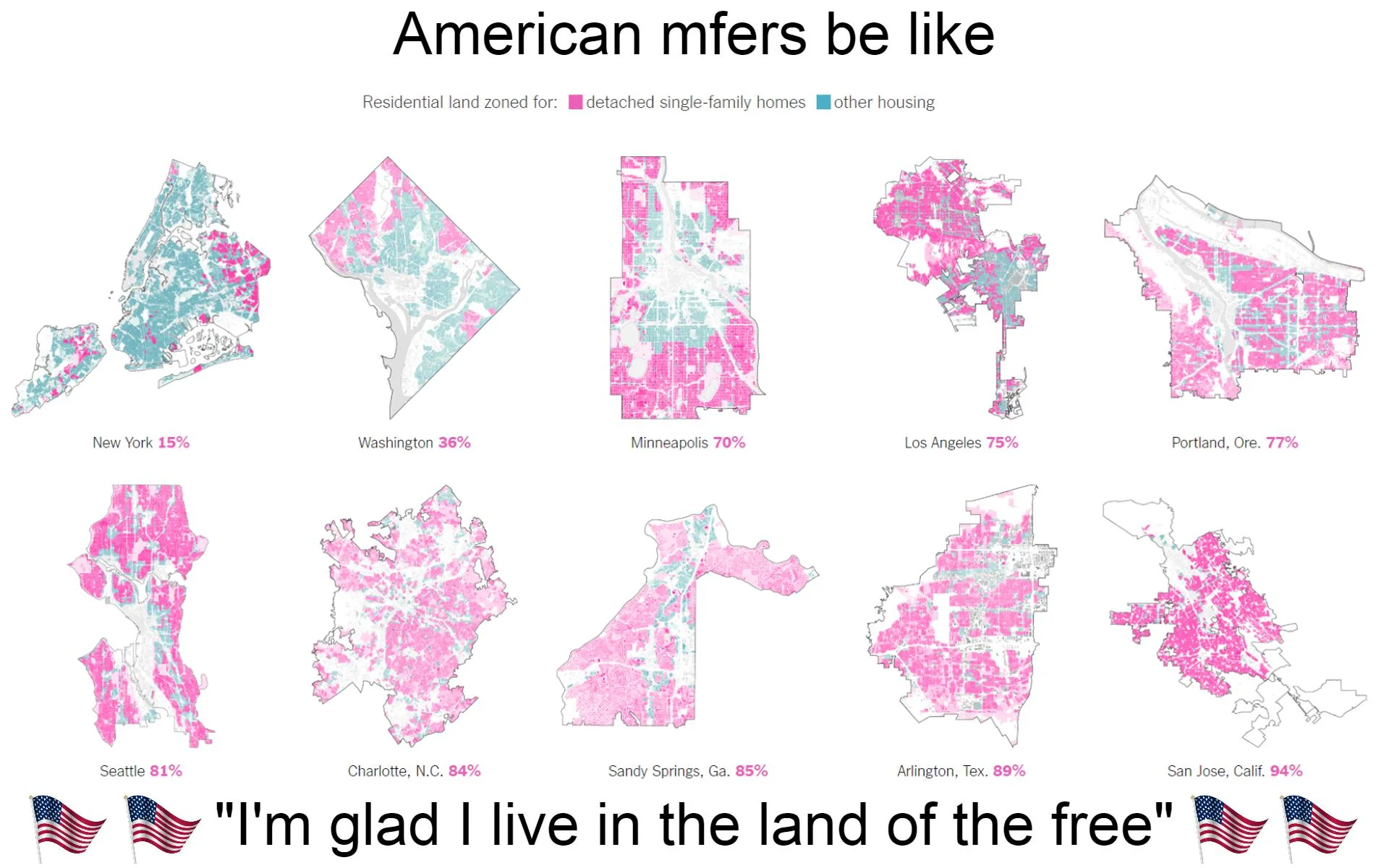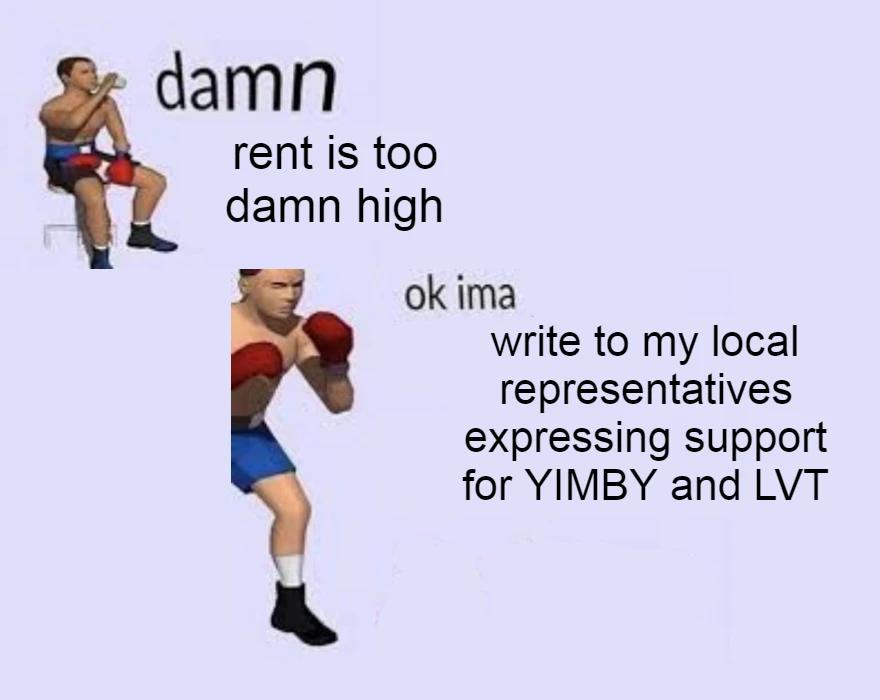Yes in my backyard!
328 readers
3 users here now
In this community, we believe in saying yes to:
- Housing
- Density
- Public transit
- Renewable energy
- Alternatives to cars
Typical YIMBY policies include:
- Elimination of restrictive zoning
- Elimination of parking minimums, setback requirements, and other arbitrary density-decreasing deed restrictions
- Elimination of Euclidean zoning
- Elimination of "inclusionary" zoning
- Elimination of undue red tape that gets in the way of new housing and transit development
- Establishment of stronger "by right" development
- Replacement of property taxes with land value taxes (LVT)
- Construction of high-quality public transit w/ transit-oriented development
- Road diets, with more space dedicated to bikes and pedestrians and less to driving and parking
Typical housing crisis "solutions" YIMBYs are wary of:
- Scapegoating immigrants
- Scapegoating airbnb
- Scapegoating "foreign investors"
- Scapegoating "greedy developers"
YIMBYism transcends the typical left-right political divide; please be respectful of fellow YIMBYs with differing political views. That said, please report anyone saying anything hateful or bigoted.
Reading List
- Housing Breaks People’s Brains
- The Problem With Everything-Bagel Liberalism
- Housing Constraints and Spatial Misallocation
- An Airbnb collapse won’t fix America’s housing shortage
- Cities Start to Question an American Ideal: A House With a Yard on Every Lot
- More Flexible Zoning Helps Contain Rising Rents
- Constraints on City and Neighborhood Growth: The Central Role of Housing Supply
- Progressive Cities Aren't Living Up To Their Values
- Local Effects of Large New Apartment Buildings in Low-Income Areas
- The Origins of Inequality, and Policies to Contain It
- Progress and Poverty
Viewing List
Posting Guidelines
In the absence of a flair system on lemmy yet, let's try to make it easier to scan through posts by type in here by using tags:
- [meta] for discussions/suggestions about this community itself
- [article] for news articles
- [blog] for any blog-style content
- [video] for video resources
- [academic] for academic studies and sources
- [discussion] for text post questions, rants, and/or discussions
- [meme] for memes
- [image] for any non-meme images
- [misc] for anything that doesn't fall cleanly into any of the other categories
Additionally, it is preferred (although not mandatory) to post a brief submission statement in the body of link posts. This is just to give a brief summary and/or description of why you think it's relevant here. Hopefully this will encourage more discussion in this community.
Recommended Communities
founded 1 year ago
MODERATORS
76
77
78
79
80
81
82
83
84





